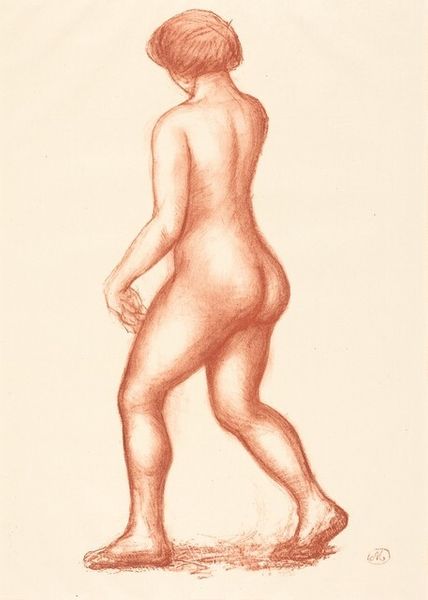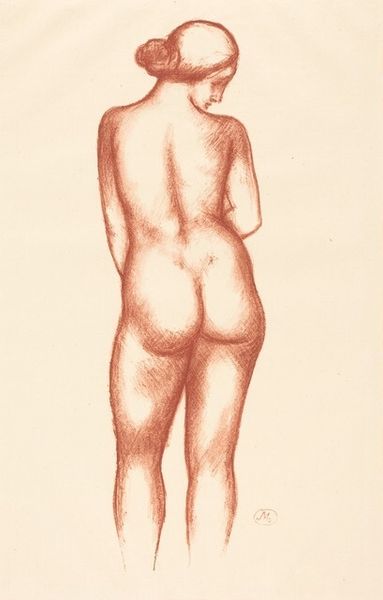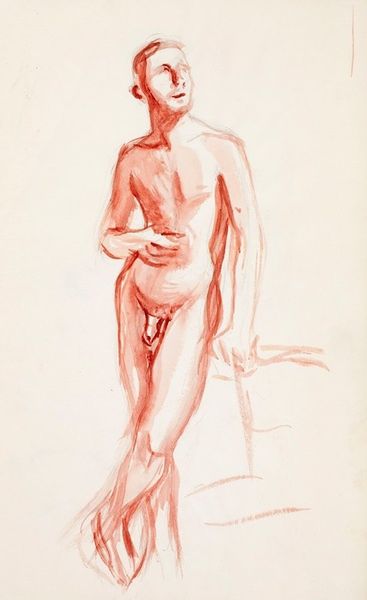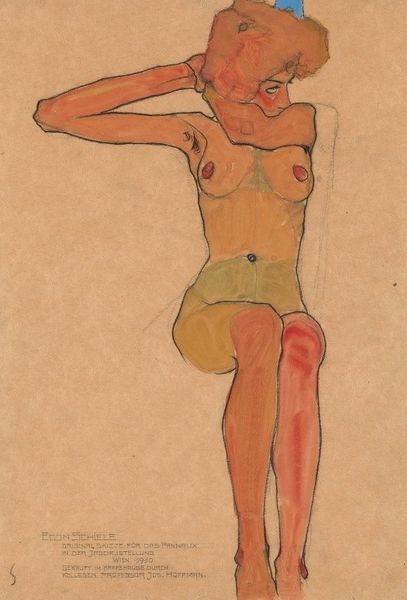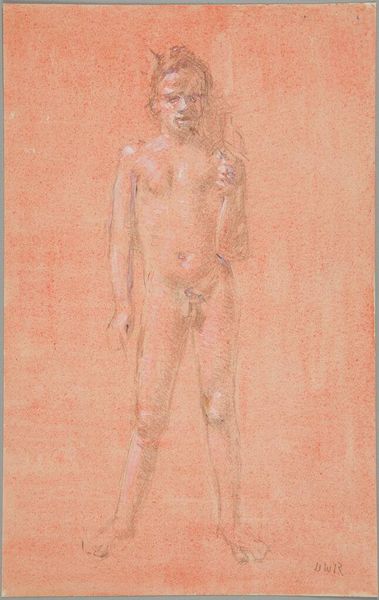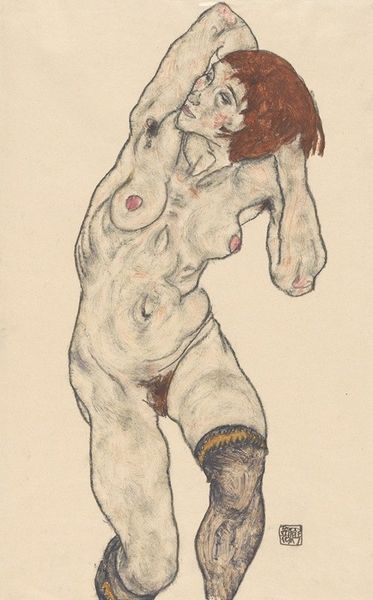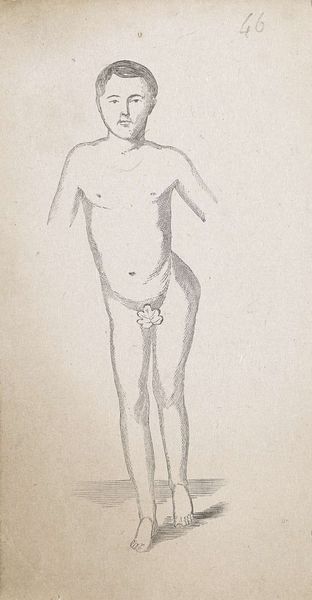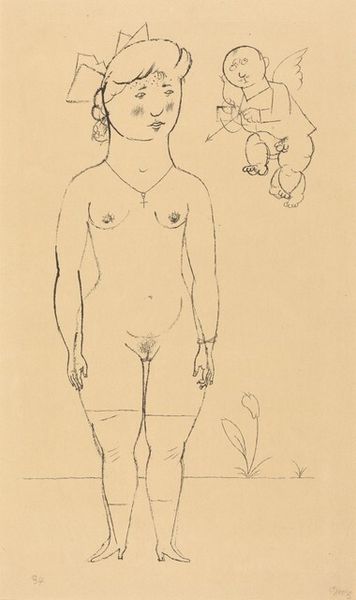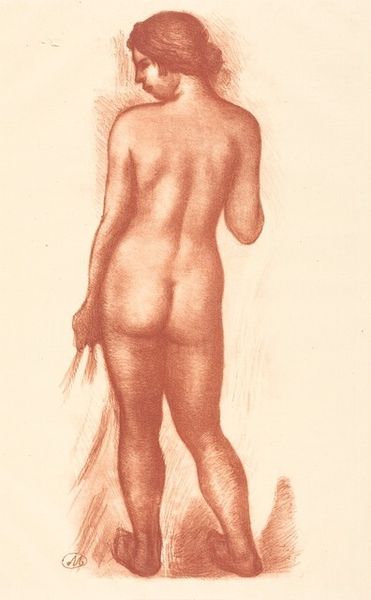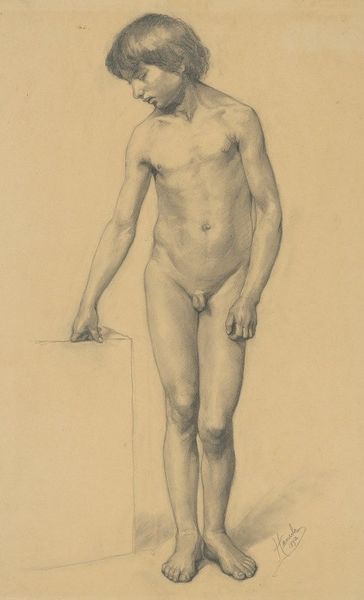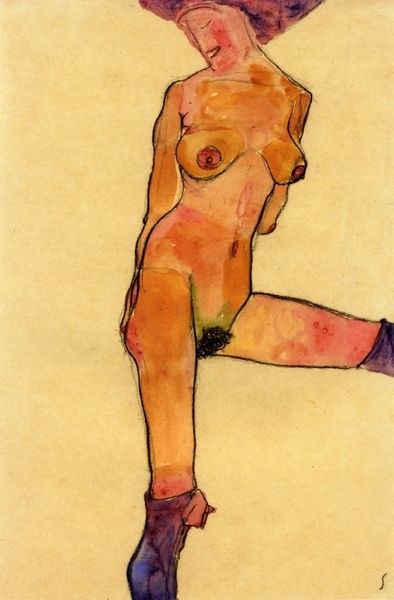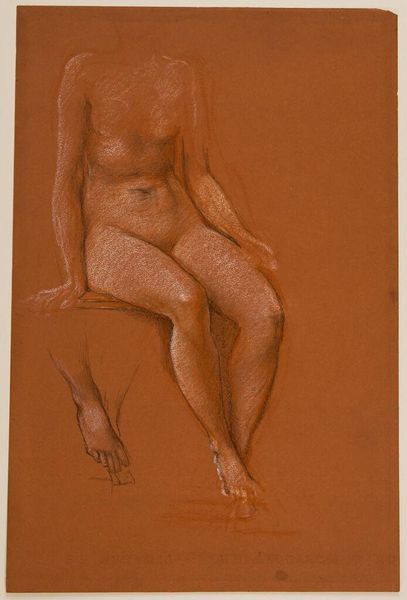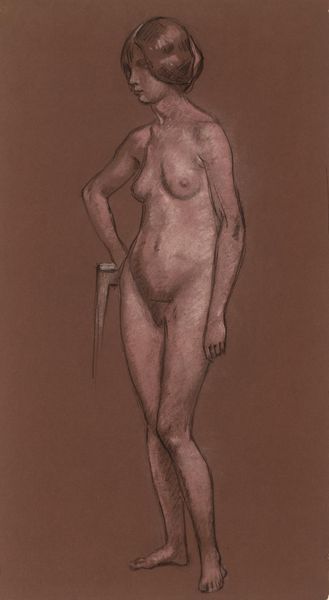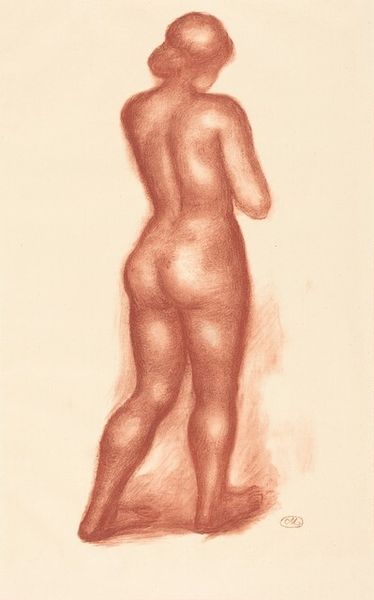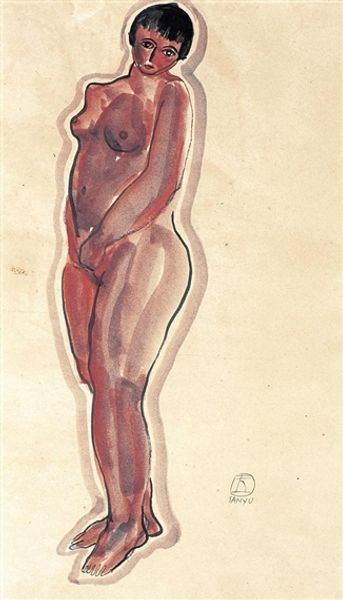
watercolor
#
figurative
#
figuration
#
watercolor
#
expressionism
#
watercolour illustration
#
nude
Copyright: Public Domain: Artvee
Curator: Looking at this, I find the faceless figure quite haunting. The smooth expanse where the features should be creates an unsettling anonymity. Editor: Indeed. What we have here is Karl Wiener's "Männlicher Akt VI," created around 1925. It's a watercolor piece. Curator: Ah, watercolor. I am struck by Wiener’s handling of the medium. The washes build up the musculature, but also feel very immediate and unlabored. I wonder, was he interested in exploring speed of production, an alternative to oil painting that might be considered more bourgeois? Editor: That's an intriguing angle. Think about the period – Expressionism was flourishing, challenging academic norms. Nudity in art always has a social context, but specifically post-World War I, representing the human form, even in its vulnerability, takes on another layer of significance. Public versus private, and art's increasing accessibility, were key parts of this visual culture. Curator: And Wiener omits the face. Does it render the man everyman? The anonymity levels the playing field, taking him outside any kind of class constraints. He becomes a subject of our observation and of the artist's skill with watercolors and washes. Editor: The removal of the face feels more unsettling than democratic to me, if that’s his intent. This was a tumultuous period in Europe, especially within Germany and Austria, where Weiner operated, between the wars. Art offered a new kind of language as new governments began to define and reassert themselves with imagery. Perhaps it speaks more to that loss of self. Curator: It speaks volumes about how we read the body, that’s for sure. We see musculature, a male nude, and yet our attention immediately goes to what isn’t there, this smooth, absent face. What assumptions are being interrogated around representation in general, I wonder? Editor: Precisely. And who would be seeing this image at the time? For whom was it intended, and where might it be displayed? These institutional questions also dictate its ultimate significance in my mind. Curator: Thanks for walking me through some possible interpretations, those points are quite astute and give us a richer idea. Editor: A pleasure. I always enjoy exploring new perspectives.
Comments
No comments
Be the first to comment and join the conversation on the ultimate creative platform.
